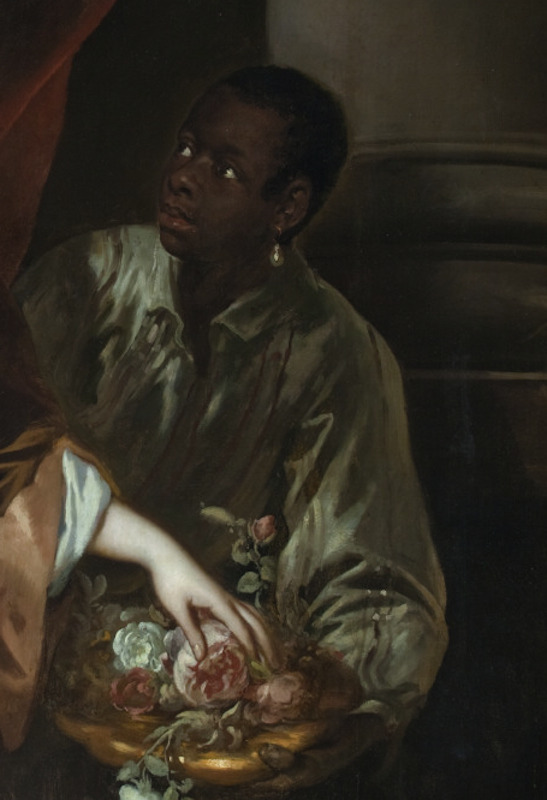
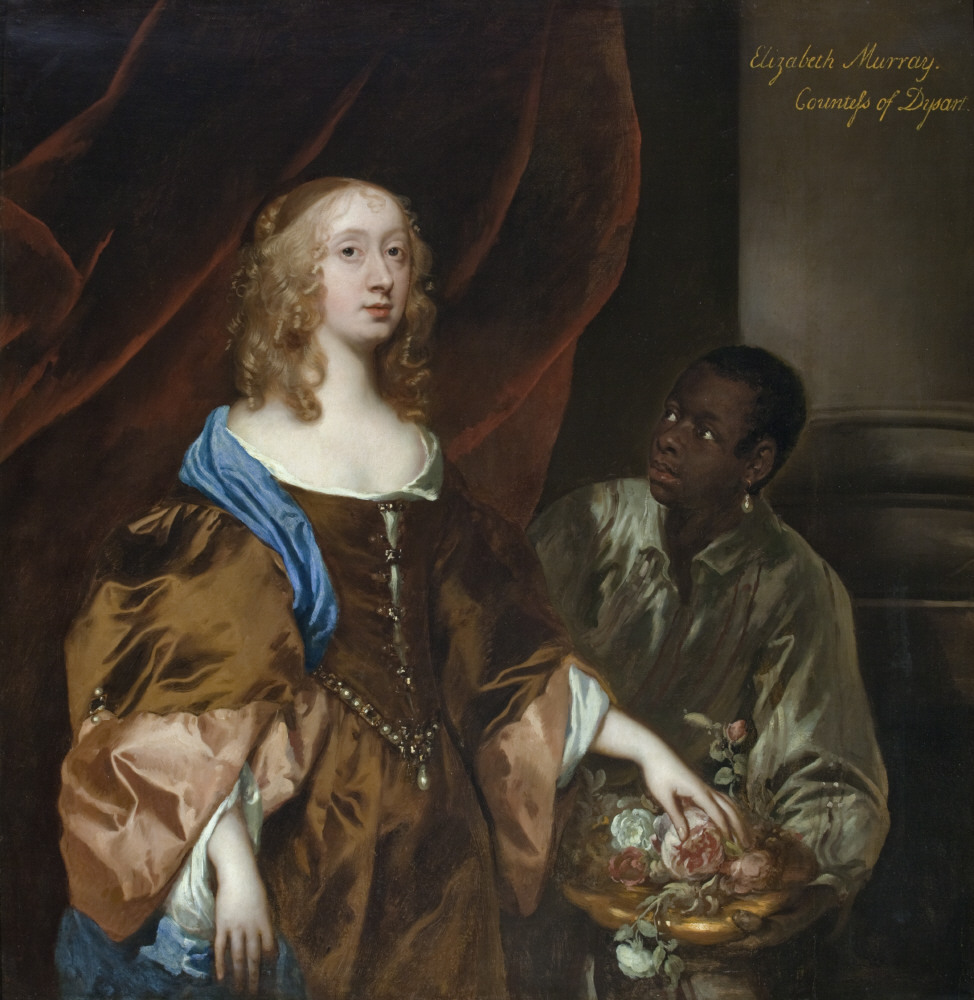
Peter Lely
Portrait of Elizabeth Murray
England (c. 1650)
Oil on canvas, 124 x 119 cm
I have seen pictures of this before, in a previous art history class, but I don’t remember there being a second person before. I seem to remember this image being cropped differently too, the way I remember it being cropped was very clearly and deliberately intended to remove the person holding the tray of flowers.People of Color from Medieval, Renaissance, and other Early Modern European works were often literally painted over in later decades or centuries.
For example: In this painting, Giulia de’Medici (the child) was painted over in the 19th century:
It was very fashionable in a lot of 17th and 18th century paintings to have a Black servant featured in portraits of very important historical figures from European History.They’re practically ubiquitous. A lot of the very famous paintings we have seen of European and American historical figures have a Black servant in them that have been cropped out or painted over. Even those stock photos from our American History Professor’s Powerpoint.
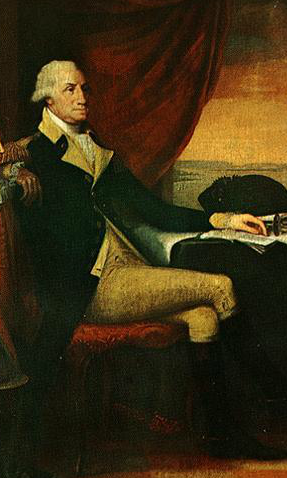
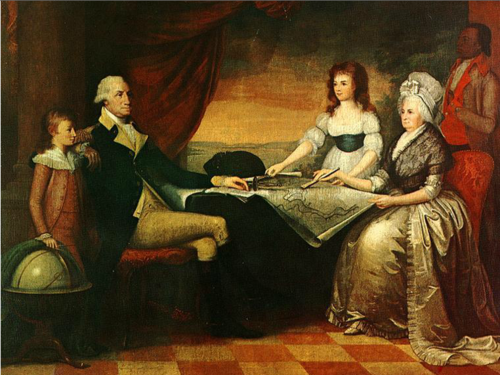
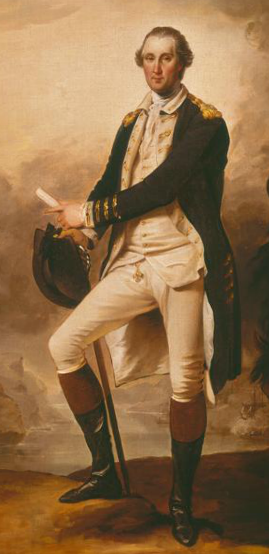
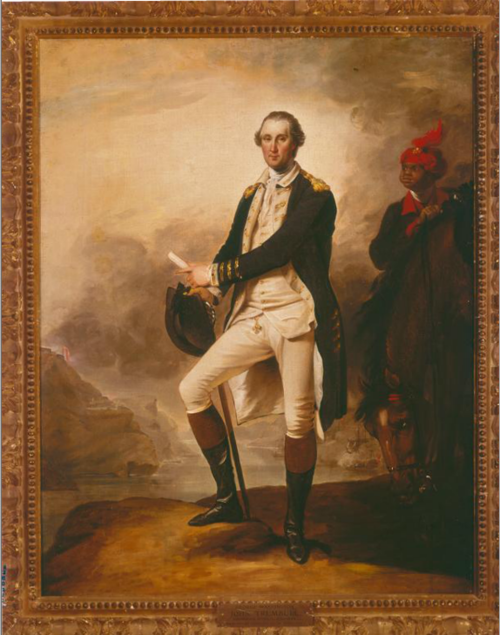
jean Chardin:
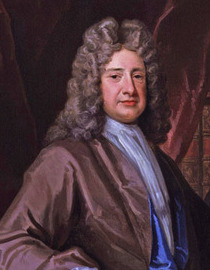
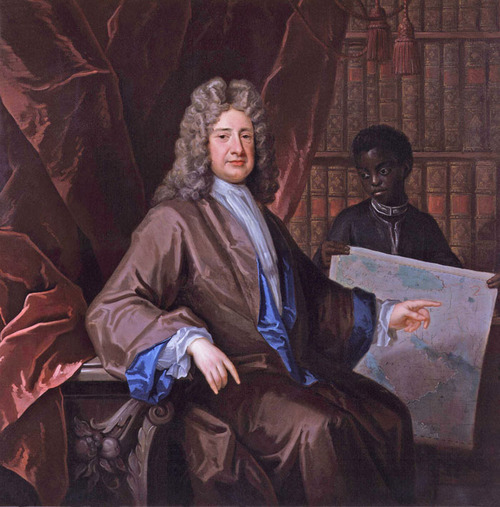
Maria Henriette Stuart

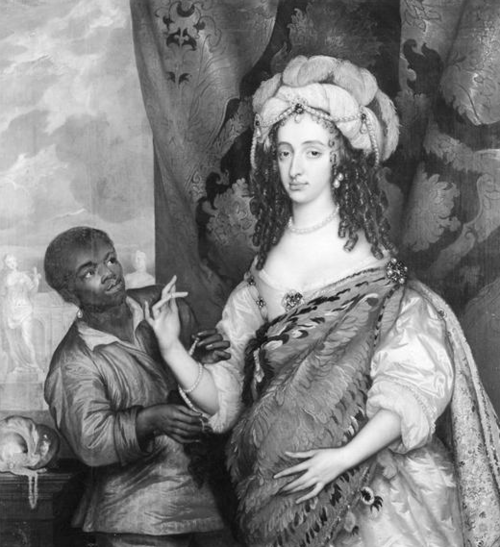
However, because of the whitewashed of history , teachers and professors continue to use the cropped images because they don’t want their lecture to get “derailed” by a discussion about race.These images are also more commonly seen on stock photo sites, including ones for academic use.
Oil paintings of aristocratic families from this period make the point clearly. Artists routinely positioned black people on the edges or at the rear of their canvasses, from where they gaze wonderingly at their masters and mistresses. In order to reveal a ‘hierarchy of power relationships’, they were often placed next to dogs and other domestic animals, with whom they shared, according to the art critic and novelist David Dabydeen, ‘more or less the same status’. Their humanity effaced, they exist in these pictures as solitary mutes, aesthetic foils to their owners’ economic fortunes. The reason they are so easy to crop out is because of the the artistic conventions which reflect the power hierarchy:











 @oba1911 for @rumorsofwarnyc #streetwear #fashion #streetstyle #streetfashion #hypebeast #mensfashion #fashionblogger #nike #streetwearfashion #clothingbrand #sneakerhead #supreme #outfitoftheday #instagood #menswear #instafashion #photography #jordan #explorerpage #sneakerhead #model #adidas #yeezy #hypebeast #photooftheday #menstyle #urbanwear #offwhite #hiphop #bape https://www.instagram.com/p/CfHh2e8Omu-/?igshid=NGJjMDIxMWI=
@oba1911 for @rumorsofwarnyc #streetwear #fashion #streetstyle #streetfashion #hypebeast #mensfashion #fashionblogger #nike #streetwearfashion #clothingbrand #sneakerhead #supreme #outfitoftheday #instagood #menswear #instafashion #photography #jordan #explorerpage #sneakerhead #model #adidas #yeezy #hypebeast #photooftheday #menstyle #urbanwear #offwhite #hiphop #bape https://www.instagram.com/p/CfHh2e8Omu-/?igshid=NGJjMDIxMWI=

